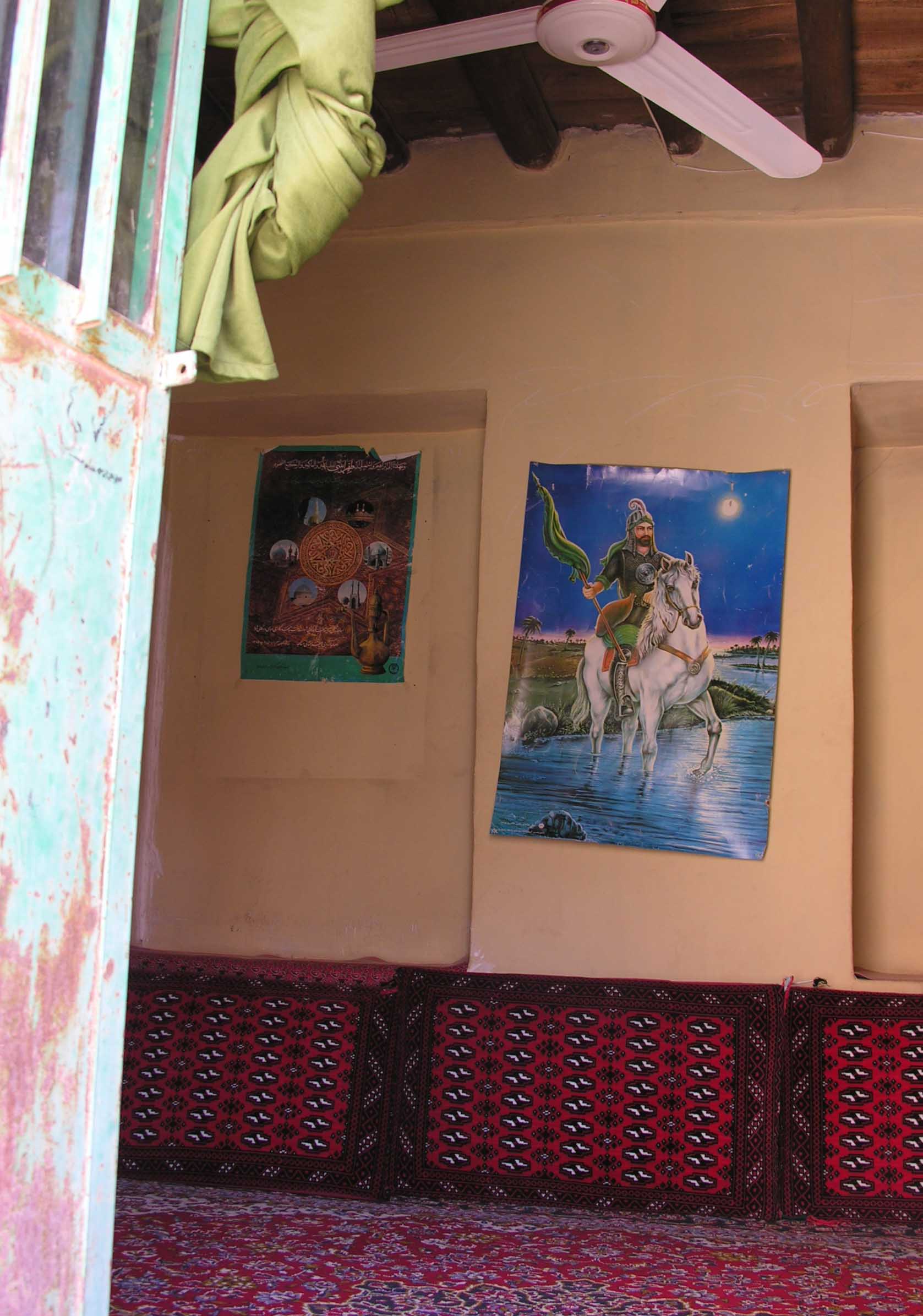Ashura is next week – on 14 November 2013. In Iran, Ashura is commonly commemorated with black for ash and red for blood, as shown in these photos from 2012.
Of course, Ashura is all about Hossein. But I think one of the biggest heroes at the battle of Karbala was Abul Fazl – and I wanted to share an image of him that I found in a lovely little namaskhane in Bedasht, on the road across Khurasan to Mashhad

I’ve already written about the village – and its caravanserai and the ‘small’ fort which was there in 1876, and is now only discernible on satellite images.
When I visited Bedasht, I heard a (rare) call to prayer. Down in the centre of the village, a friendly crowd – with lots of women – gathered round me. The women were noticeably light skinned compared to their deeply tanned menfolk. I decided the village must be prosperous: the women are inside (rather than working in the fields).
A middle-aged lady who took charge told me that there are three places of worship in this tiny village, and ordered a young man to take me to the oldest: a namaskhane (prayer house).

This is in a building that’s only a few decades old, but is delightful. It’s mainly used for weddings: so, unusually, has much more space for women than men. Also unusually, it’s decorated inside with pictures of living beings. There’s a big poster of Abbas: not the Great Shah but another lion of a man – the ‘father of heavenly graces’ (Abu’l Fazl).
Commonly, this valiant warrior (a grandson of the Prophet Muhammad, son of Imam Ali, and half-brother of Imam Hussain) is shown on his famous white horse, standing in the Euphrates.
Sometimes, though, he is shown in the River – he didnt drink any of the water This is an image from Karbala, just before Abu’l Fazl was attacked and killed trying to get water from the river for his thirsty five-year old niece.